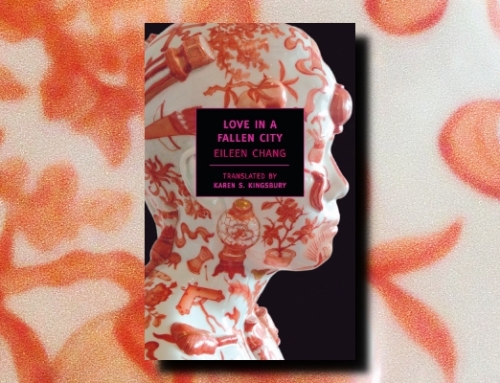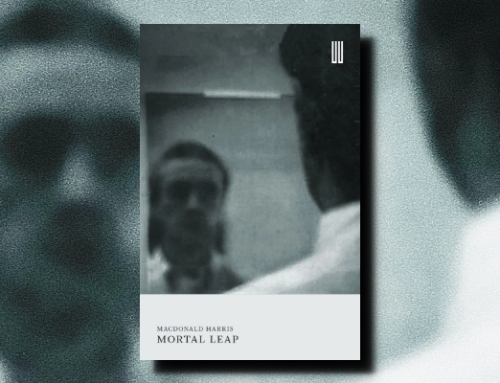Nazi Literature in the Americas
by Roberto Bolaño (Literatura nazi en América, 1996)
translated from the Spanish by Chris Andrews (2008)
New Directions (2009)
280 pp
Over the Christmas holiday last year I read Roberto Bolaño’s 2666. I wrote a review that balances on the negative side because it just didn’t come together for me — at all. The over-the-top praise surely didn’t help me going in to the book. That said, taking 2666 by its pieces, I loved it. The writing was so compelling and interesting, as were the individual stories. I figured that I’d probably get along better with Bolaño’s works of less than 900 pages that he actually finished before he died. My first attempt: Nazi Literature in the Americas.
Strangely enough, this one was even more in pieces even than 2666, but it tied together better and felt more cohesive. What we have here is a series of short (usually only a few pages, sometimes as short as a paragraph) biographical sketches of a few dozen writers from Latin and North America. Some tie together because they are from the same family or from the same movement, but all tie together because of their extremely far Right political views in which they see the hope for the human race (at least, the human race as they’d like to define it):
Shortly before his death, in a letter to a friend in Buenos Aires, he foresaw a radiant epoch for the human race, the triumphant dawn of a new golden age, and he wondered whether the Argentinian people would rise to the occasion.
Of course, it’s no secret, if you read the title, that their views are terrifying. And Bolaño has a great ability to present their wishes in detailed lists where the writing, in its disinterested rhetoric, is very compelling (not the thoughts: I said “the writing”).
As a young man, Salvático advocated, among other things, the re-establishment of the Inquisition; corporal punishment in public; a permanent war against the Chileans, the Paraguayans, or the Bolivians as a kind of gymnastics for the nation; polygamy; the extermination of the Indians to prevent further contamination of the Argentinean race; curtailing the rights of any citizen with Jewish blood; a massive influx of migrants from the Scandinavian countries in order to effect a progressive lightening of the national skin color, darkened by years of promiscuity with the indigenous population; life-long writer’s grants; the abolition of tax on artists’ incomes; the creation of the largest air force in South America; the colonization of Antarctica; and the building of new cities in Patagonia.
He was a soccer player and a Futurist.
I love that little “He was a soccer player and a Futurist” thrown in the next paragraph, as if what we read above were just facts of biography and nothing more. In fact, Bolaño is incredibly adept at making these writers seem real. Though none in this book is real, all are realistically situated among real writers and real literary and political movements. One moment that stood out to me was an ill-fated encounter one of the characters had with the poet Allen Ginsberg. The episode was made more real in light of a recent article I read about a similar encounter between the poet and the younger poet Matthew Dickman (Dickman’s encounter was completely different than the one in this book; it ended in a kiss, not a beating).
The pseudo-reality becomes important when you realize just why (well, at least one reason why) Bolaño wrote this book. When I started it, I couldn’t get my head around this man’s depth of imagination. Here he has created a series of realistic figures, complete with the titles of the novels they wrote, dissertations about them, movements they joined, all told in greater detail and with more flare than many good biographies. He does an excellent job seeming to sound like a disinterested, though fluent, purveyor of information while keeping in the editorial jabs, one of the best things about such magazines as The New Yorker and The Economist. Here’s a good example of a place where I was laughing out loud while admiring Bolaño’s scope:
That was not to be Pérez Masón’s last visit to the jails of socialist Cuba. In 1965 he published Poor Man’s Soup, which related — in an irreproachable style, worthy of Sholokov — the hardships of a large family living in Havana in 1950. The novel comprised of fourteen chapters. The first began: “Lucia was a black woman from . . .”; the second: “Only after serving her father . . .”; the third: “Nothing had come easily for Juan . . .”; the fourth: “Gradually, tenderly, she drew him towards her . . .” The censor quickly smelled a rat. The first letters of each chapter made up the acrostic LONG LIVE HITLER. A major scandal broke out. Pérez Masón defended himself haughtily: it was a simple coincidence. The censors set to work in earnest, and made a fresh discovery: the first letters of each chapter’s second paragraph made up another acrostic — THIS PLACE SUCKS. And those of the third paragraph spelled: USA WHERE ARE YOU. And the fourth paragraph: KISS MY CUBAN ASS. And so, since each chapter, without exception, contained twenty-five paragraphs, the censors and the general public soon discovered twenty-five acrostics. I screwed up, Pérez Masón would say later: They were too obvious, but if I’d made it much harder, no one would have realized.
I was being short-sighted, though, in just admiring Bolaño’s scope. What he has to say about literature and rhetoric is quite profound. There are several places where he highlights the works of an author and I thought That sounds interesting.
A number of the poems are noteworthy:
— “A Dialogue with Hermann Goering in Hell,” in which the poet, astride the black motorcycle of his early sonnets, arrives at an abandoned airfield, in a place known as Hell, near Maracaibo on the Venezuelan coast, and meets the shade of Reichsmarschall, with whom he discusses various subjects: aviation, vertigo, destiny, uninhabited houses, courage, justice and death.
— “Concentration Camp,” by contrast, is the humorous and at times touching story of Zwickau’s life as a child, between the ages of five and ten, in a middle-class neighborhood of Caracas.
And after thinking hmmm, interesting, I had to stop and cringe. Ahh, the seductive power of literature and rhetoric. Sometimes something so reprehensible is made interesting and noteworthy, perhaps even praiseworthy, because of the skillful use of language holding it up, even if the ideas it espouses are ugly. I found this book a nice review of several tragedies of the 20th century. Rhetoric will undoubtedly continue to be the cause of tragedies to come (but hopefully also of good things). Of course, it is ironic coming from a master rhetorician who seductively pulls us into these accounts with great sentence fluency, comedy, and poetry. And they are interesting, and compelling, and horrific (indeed, the book is complete with an EPILOGUE FOR MONSTERS).
On a final note: Somehow, after 175 pages of brief biographical sketches, all from a scholarly third person, Bolaño throws in a mighty conclusion. It’s worth reading for many reasons, but to feel his conclusion is its own reward. So, see if you can guess how I feel about Bolaño now.










I’ve just started reading 2666, so was interested to read your thoughts on this. 2666 is feeling very disjointed at the moment and am really hoping it pulls together a bit more towards the end.
I’ll have to wait until I finish 2666 before making any decisions about reading more of his books, but it was great to read your thought – thanks.
I’m looking forward to your thoughts on 2666, Jackie. I think you know mine, and I’m wondering if you’ll feel intrigued enough to read more.
This does sound very good. I’ve Savage Detectives in my summer reading pile. It’s interesting to see Bolano getting so much play this year. Is this a book blogger product? I’ve not seen anything in print or on MSM websites.
I’m not sure, cb. My own readings haven’t been the product of any book bloggers. I read 2666 last year because of the hype, it being my first Bolaño. Nazi Lit was just released in paperback by New Directions, so that was my next one. New Directions has been steadily releasing and will continue to release much of his backlist, so I’m thinking that also might have something to do with it.
I have seen that several bloggers have a 2666 project for this summer, but I’m not aware of any of them reading other Bolaño books. I could have missed it too, but from my experience recent superstar status combined with a steady output of new translations is the main reason. Surely book bloggers are spreading the fire, though.
I think I’m going to keep with the New Directions backlist before I move on to The Savage Detectives. Maybe I’ll have come full circle by that point and can appreciate his more massive work better. Might might even give 2666 a go again in several years’ time!
There’s a sly joke in the third quote you posted, in the phrase “in an irreproachable style, worthy of Sholokov”. Sholokov was accused of plagiarizing parts of ‘And Quietly Flows the Don’, his reputed masterpiece. Supposedly there was a great difference in quality between that book and his others.
Thanks Chris! Unfortunately for me, I’m sure much of that stuff flew by me, Chris. Little by little, I hope I can appreciate even more of what he did here!
It took me several hundred pages to trust Bolanos in 2666. But by the third part, I was completely committed. The book does not resolve anything, but is very insightful. If you are not looking for a tightly wound story, then 2666 could seem brilliant. Its the best book I’ve read in years!!